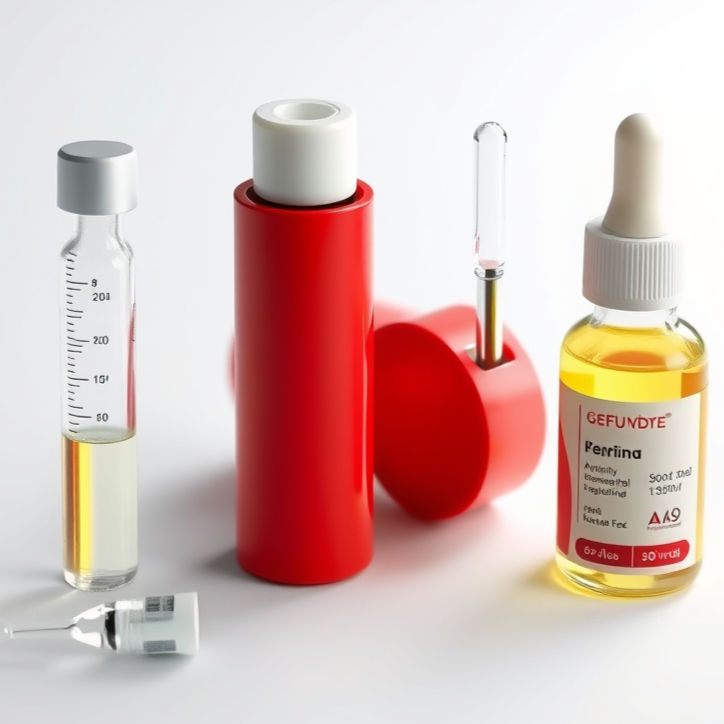The Strategic Imperative: Part 3 - Efficacy and Safety Endpoints in Your TPP
- Hi Ai Consulting

- Jun 4
- 4 min read
Updated: Jun 5
Welcome to Part 3 of "The Strategic Imperative," where we pivot from defining who your product is for to how it will perform and differentiate itself in a competitive landscape. In our previous posts, we established the Target Product Profile (TPP) as a strategic roadmap, defining your indication and precisely identifying your target patient population. Now, we dive into the critical scientific and clinical attributes that showcase your product's value: TPP Efficacy Endpoints, Safety and Tolerability Profiles, and Pharmacokinetics/Pharmacodynamics (PK/PD). We'll explore how defining these elements within your TPP not only guides your development but also forms the bedrock market and financial viability.
TPP Efficacy Endpoints: Are Your Measurable Outcomes Truly Defining Value for Patients and Payers?

Your TPP must define efficacy endpoints, distinguishing between "minimally acceptable" and "ideal" profiles to prove tangible benefit. This section defines the objective, measurable outcomes used to assess your product's clinical benefit. Distinguish between primary endpoints (addressing the main research question, like Overall Survival in oncology), secondary endpoints (showing additional effects or supporting mechanisms of action, such as Quality of Life or Progression-Free Survival), and tertiary/exploratory endpoints. Your TPP must clearly state the required level of clinical improvement or differentiation compared to current treatment options or the standard of care (SOC). This means defining both a "minimally acceptable" efficacy profile (essential for continued development) and an "ideal" or "stretch" goal (highly desirable attributes that boost product value and market access).
Focusing on "clinical relevance" and "meaningful endpoints" is crucial. It's not enough for a drug to show a statistically significant effect; it must translate into a tangible, patient-centric benefit. This includes improved survival, reduced symptoms, restored function, or a lower chance of developing a chronic condition. This direct impact on the patient's lived experience drives market adoption, physician acceptance, and favorable reimbursement. Therefore, prioritize efficacy endpoints that are objectively measurable, statistically robust, and directly yield clinically meaningful outcomes. This patient-centric approach to endpoint selection faces increasing scrutiny from regulatory bodies, payers, and patient advocacy groups, directly influencing your product's perceived value and market uptake.
TPP Safety and Tolerability Profile: Is Your Risk-Benefit Balance Truly Differentiating Your Product?
A superior or equivalent benefit-risk balance is non-negotiable; your TPP must clearly outline an anticipated safety profile that builds confidence. Your TPP should define a safety profile that is at least equivalent to, or ideally demonstrably improved compared to, current treatment options or the standard of care. This includes specifying the target incidence and severity of adverse effects. A critical step is establishing the acceptable risk-benefit balance, considering the severity of the treated condition and the potential impact of both the disease and the treatment on patient quality of life.

While efficacy often drives drug development, safety and tolerability can be equally significant differentiators or major reasons for treatment discontinuation in real-world practice. For instance, many patients discontinue existing drugs due to intolerance or adverse quality-of-life impact. While an "enhanced safety profile" alone might not constitute an unmet medical need, it provides a crucial competitive advantage and strongly influences patient adherence and physician preference. Payers increasingly consider overall safety in value assessments, as adverse events incur additional healthcare costs. Therefore, your TPP must define the desired safety profile, not just to meet minimum regulatory thresholds, but to strategically position your product for competitive advantage, foster patient adherence, and secure favorable reimbursement.
Pharmacokinetics (PK) and Pharmacodynamics (PD): Are These Scientific Parameters Optimizing Patient Experience and Market Competitiveness?
Beyond the lab, your PK/PD profile directly impacts patient convenience, adherence, and your product's market edge. This section details the desired pharmacokinetic (PK) profile (e.g., absorption, distribution, metabolism, excretion, half-life, bioavailability, and exposure-response relationships) and pharmacodynamic (PD) characteristics (e.g., target antigen binding, receptor modulation, or other biological activity) necessary to support intended efficacy and safety outcomes. For controlled-release formulations, defining the desired PK profile (e.g., sustained plasma concentration levels, optimal peak-to-average concentration ratio) is critical, balancing prolonged action with potential initial "burst" effects.
PK/PD data aren't just technical details; they inform crucial aspects of product design, such as optimal dosage, frequency, and route of administration. These factors are key for patient convenience and physician preference. An optimized PK/PD profile enables more convenient dosing, a significant commercial differentiator in competitive markets. Conversely, an inadequate profile can lead to suboptimal outcomes or unacceptable side effects, undermining product value. Your TPP should articulate and strategically link desired PK/PD attributes to your overarching clinical and commercial goals, acknowledging their profound impact on patient experience, adherence, and market competitiveness.
Competitor Analysis: Do You Know Your Market Rivals as Well as You Know Your Science?
Understanding your competitors isn't optional; it's fundamental to crafting a TPP that truly differentiates your innovation. A detailed competitive analysis is fundamental to your TPP, covering existing products, pipeline candidates, and strategic positioning. Identify primary competitors, assess their current market share, and profile their strengths, weaknesses, and strategic moves. This analysis must extend to pipeline candidates that could emerge as future competitors, understanding their potential market impact. Understanding competitors' pricing strategies, market positioning, and anticipated future moves is vital for developing a differentiated value proposition and an effective pricing strategy for your new product.
Need Help Getting Started?
Don't let the crucial time for TPP development slow your progress or risk your candidate. At Hi Ai Consulting, we understand the unique pressures of early-stage biotech. Our TheraAIsight Target Product Profile + Benchmarking service uses AI to streamline and enhance your TPP process. Plus, our core offering, Custom Disease Landscape reports, provides the key market information, epidemiology, and patient journey insights you need to evaluate target patient needs and refine your TPP.
Here's how TheraAIsight helps you:
Get deeper, actionable insights for your target indication. AI replaces weeks of research, while our analysis reviews and enhances market landscapes for ANY disease in days, not weeks.
Use AI technology to extract data and deliver insights, including references to reputable sources.
Experienced analysts review all reports to ensure accuracy and relevance. We enhance them with market intelligence to discover growth opportunities.
AI generates 5 diverse product profiles based on critical market trends, giving you a comprehensive strategic overview.
AI benchmarks your product directly against these market trends, highlighting your competitive position.
AI reveals your TPP's quantitative market opportunities and challenges, equipping you with actionable insights for funding and strategic decisions.

Comments